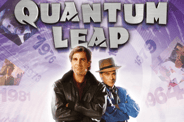
I’ve not met many leaders who don’t say they want people (and an organization) to perform at consistently high levels. Yet, in virtually every company I’ve worked in, or consulted with, there are great variations (across roles, teams, regions, business units) in the actual levels of performance. Notice I said the word great. There will always be a performance curve across any population.
Example: I worked with a client who had a national sales team. Across the country, she had six regional managers. Two consistently met or exceeded their targets (the company most keenly measured lagging indicators, such as market share, revenue growth, net new accounts), and the other four toggled back and forth between sometimes just eeking out their targets, and frequently missing their targets (sometimes, with very significant margins). They had hired heavy hitters from industry competitors, promoted top producing sales people into leadership roles, and yet, they couldn’t crack the code for high performance across all regions.
The question is: how does an organization create a culture, systems, and processes to close the performance gap between the highest performers and the rest of the population?
Want the secret? Ok – here are the critical elements (Warning: It isn’t as easy as I’m going to make it sound. The devil is in the detail and the execution, and this is where most companies fall down. Want help? Shoot me a note via twitter, linkedin or email, and we can talk).
• It starts and ends with culture: the company and the division/team must have a winning culture. This includes having a clear vision, aligned leadership around what is most important right now, and how the company measures success, as well as transparency in communication.
• Talent, talent, talent: you’ve got to get the right people in the right roles. Note that there is an absolute dependency on the first element, culture. If you bring rockstars into a toxic culture, the toxic culture will win, 100% of the time, without fail. The rockstar will either leave, or bring her level of performance down to the dysfunctional level that exists in the organization. Plus, when there is a winning culture, and all the people in the firm live the organizational values, every day, you will become a magnet for great talent. Forget about your HR/recruiting team banging their heads against the wall, trying to find a needle in the haystack for great talent – they’ll be banging down your doors for a chance to work with you. Oh, and by the way, when you have winning culture, bring in top talent, and set the systems and processes in place so people can thrive in their roles, you’ll see how the people who can’t/won’t get on board will leave – most of the time on their own. People get it when they don’t fit.
• Culture of learning: this isn’t about having a catalog of 1,000 generic online courses (only), and saying to people, “We are all about learning – go look through the content and pick what you want to learn.” This is about being very intentional about learning and development. This is about each person having clear development goals (professional and personal – and leaders who support, equip and hold their people accountable for getting better), learning from every interaction, every sales call, every win and loss, every initiative that is launched and landed, and really ingraining this mindset throughout the organization. Humans like to contribute and make progress. Remember how curious we all were as kids – many have had the curiosity shut down over time (school, bad leaders and managers in other firms). We need to re-awaken this natural curiosity to get better and achieve more.
• Systems of management: every organization needs to have a structured approach to one-on-one meetings, team meetings, and performance reviews – and none of these should occur in an ad hoc, unintentional fashion. With meetings for example, Patrick Lencioni coined the term meeting stew . This occurs when there is no clear intent/purpose in the meeting, so leaders cram everything in one discussion. People cannot function at high levels this way, and the result is often that people miss the meetings, and the general sentiment is that the sessions are unproductive. Everything we do must be done with a purpose in mind, and discussions must link to the organizational goals, strategies and ultimate vision. Otherwise, don’t waste the time. This is a very significant topic; I’ll have a full post on this subject coming soon, so stay tuned.
Creating a high performance organization doesn’t happen by accident. Get intentional, follow this recipe, and watch how your people and organization rise to the occasion.
Andrew Freedman, Managing Partner at SHIFT, specializes in helping SHIFT's clients grow by creating well aligned company cultures and strategies that result in remarkable client and employee experiences.







